Does crochet use more yarn than knitting or does Tunisian crochet use more yarn than knitting? Let’s find out together which of these three crafts is fastest to work up and takes more yarn.
What started this exploration into the yarn consumption of different crafts
Recently, a member of one of the groups I’m part of asked us if we know how much yarn Tunisian crochet uses when compared to knitting, for an upcoming project in which they would use some knitting instructions translated into Tunisian crochet stitches.
This intrigued me, also taking into account the recent blog post by Aoibhe Ni about her own experiment, measuring the speed of regular crochet versus Tunisian crochet.
I didn’t really agree with Aoibhe’s findings because I know that she uses the throwing technique (like in knitting) for Tunisian crochet, but the more common method of picking is way faster.
So of course I had to do my own experiment with all three crafts to both answer the question from the group member and to answer my own curiosity regarding the speed for different stitches.
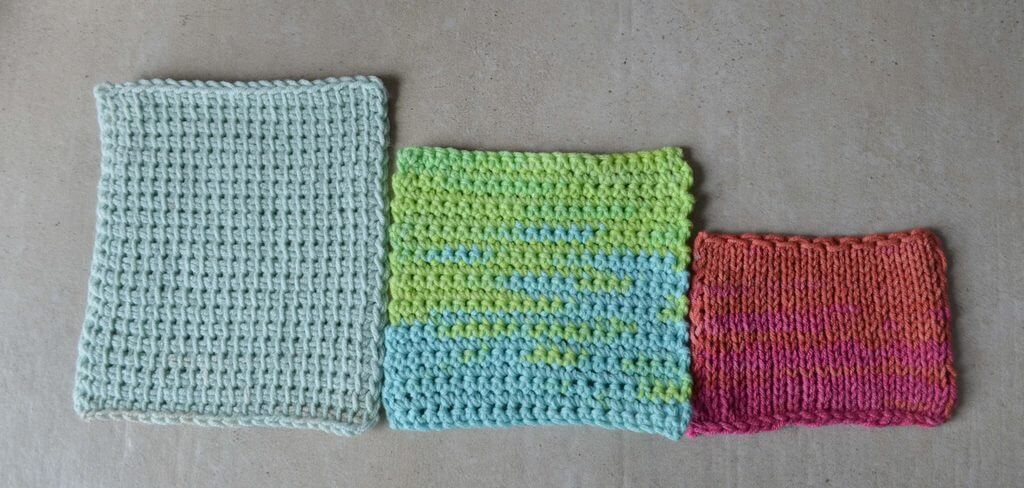
For the experiment, I used a yarn that I know well and use regularly in my videos. It’s Alize Cotton gold, a 50% cotton, 50% acrylic yarn that’s just a little stretchy, but also has good body and has a high twist.
These characteristics are important because I didn’t want a stretchy yarn (like a wool or an acrylic) that would distort the various stitches, nor did I want a completely limp yarn (like cotton or linen), which would be very difficult to work with.
This yarn can also be slightly steamed to get it to lay flat, without distorting the stitches.
I chose to work with a 4 mm hook, 4 mm needles and a 4 mm Tunisian crochet hook.
I worked three samples, each with the same number of stitches (the knit one has an extra row because of the bind-off), since I didn’t know how many stitches would be needed to make a 10 by 10 cm swatch.
Like this, it’s easier to just use the rule of three to calculate the numbers of stitches needed for each craft to get a 10 by 10 cm square.
I did start from the recommendation on the label for a 10 by 10 cm square, that is 21 stitches and 35 rows for knitting.
I timed the making of each sample, including the cast on, but not the bind-off, since the bind-off is not a part of a stitch pattern that you’d regularly use in a large project.
I also weighed all the samples, but only have access to a kitchen scale, so unfortunately I can’t vouch for the exact yarn consumption, as the increments are in grams.
Now let’s see some results.
Regular crochet sample with weight and time
I started with the regular crochet sample.
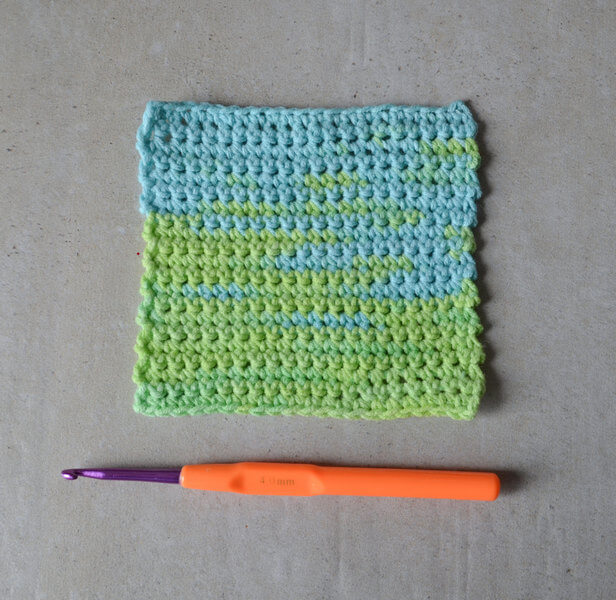
I did 21 foundation Sc stitches (Dc in UK terms) and 20 more rows of Sc across. There’s no bind off in regular crochet, so I stopped when I reached 21 rows in total.
That’s 441 stitches.
The sample measures 10.5 cm in width and 10 cm in height. That’s 105 cm squared.
The sample weighs 6 grams.
It took me 18 minute and 37 seconds to make the sample. That’s 2.5 seconds per stitch.
This means that a 10 by 10 cm sample would:
- have 420 stitches;
- weigh 5.7 g;
- take 17 minutes and 40 seconds to make.
I will list all the other results and then we can compare them to each other in some fun graphs (I am a scientist, after all).
Knitting sample with the same size of needle
I continued with the knit sample.
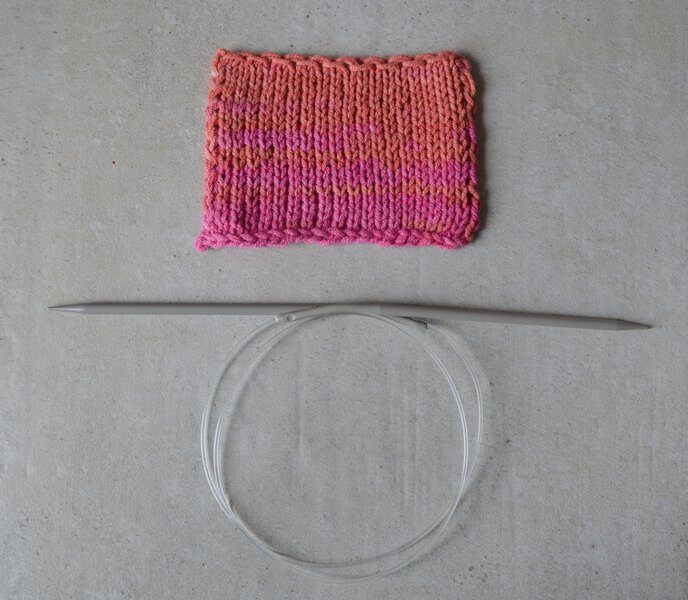
I cast on 21 stitches using a long tail cast-on. I worked 20 rows in stockinette stitch, but forgot I needed to cast off as well, so we have a total of 462 stitches (21 rows, plus 1 row of cast-off).
The sample measures 10 cm in width and 6.5 cm in height. That’s 65 cm squared.
The sample weighs 3 grams.
It took me 13 minute and 24 seconds to make the sample. That’s 1.7 seconds per stitch.
This means that a 10 by 10 cm sample would:
- have 710 stitches;
- weigh 4.6 g;
- take 20 minutes and 36 seconds to make.
That’s a lot longer, isn’t it? Especially taking into account that a single stitch takes only 1.7 seconds to make. But these stitches are much smaller than the regular crochet ones.
Tunisian crochet sample with the same size of hook
This brings us to the Tunisian crochet sample, the largest of them, despite using the same size hook.
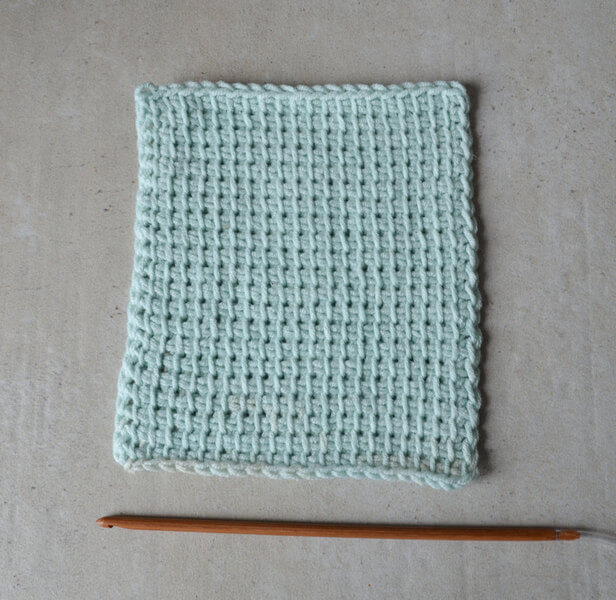
I started with Ch 21 and picked up the first row into the back bumps of the chains. I worked 21 rows of Tunisian simple stitches in total, including the first row.
I also cast of with slip stitches (there’s no extra row created when you cast off in Tunisian crochet, as opposed to knitting).
That’s 441 stitches in total.
The sample measures 11 cm in width and 12.5 cm in height. That’s 137.5 cm squared.
The sample weighs 8 grams.
It took me 17 minute and 40 seconds to make the sample. That’s 2.4 seconds per stitch.
This means that a 10 by 10 cm sample would:
- have 320 stitches;
- weigh 5.8 g;
- take 13 minutes to make.
Now let’s compare these results and see why they might have come out like this.
Discussion – does crochet use more yarn than knitting?
Before we interpret these results, we first need to see what the limitations are in this experiment.
I tested only one yarn type and weight. I would need to test at least 10 different yarn type/weight combinations, with their respective hook sizes, for a decent amount of data.
I am only one person with a specific amount of experience in each of these crafts. I know how to work all three techniques quite proficiently, which means that my results are very different from those of a person with very little experience in knitting or Tunisian crochet, for example.
I also use specific techniques for holding the yarn and for picking it up, in all three crafts. Different ways will influence the speed of the stitches in each craft.
For example, continental purl stitches seem extremely awkward to me and would take at least twice as long to make as the purl stitches I’m used to.
All this to say that there would be a very wide range in the world for the results of such an experiment and that these results are specific to myself and my own level of experience.
Also, different stitches will give different results. Some stitches in each craft take up a whole lot more time and yarn than these basic stitches that I used for the experiment.
Yarn consumption in knitting vs. crochet vs. Tunisian crochet
As expected, knitting takes up the least amount of yarn per given surface. That’s because the stitches are quite flat, there are only two layers of yarn in any given spot.
Regular crochet comes next, with about 25% more yarn used per given surface. The fabric is much stiffer and slightly thicker, with about three layers of yarn in most places.
Tunisian crochet takes slightly more yarn than regular crochet and about 26% more than knitting for the same surface.
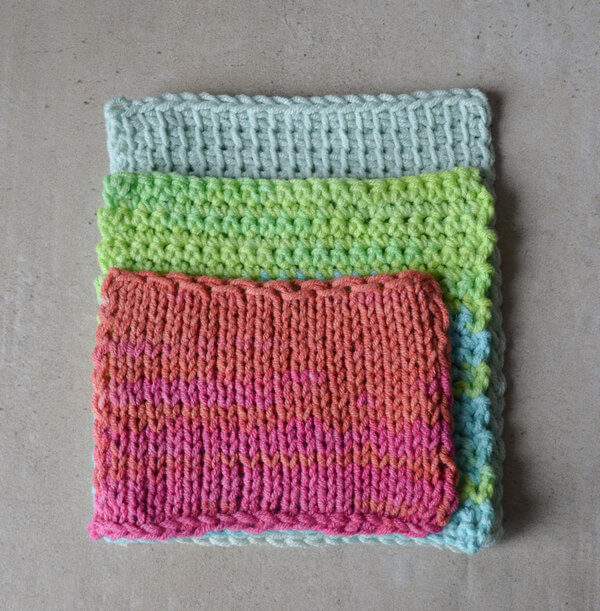
This was a surprise for me, because I’d expected the yarn consumption to be lower. I can explain that expectation.
Usually, I make Tunisian crochet with much larger hooks than the ones recommended for regular crochet for the specific yarn. That makes the fabric lighter and more malleable than fabric crocheted with the same yarn, but a smaller hook.
For this experiment, however, I decided to use the same hook for all three samples, which makes the Tunisian crochet sample more compact.
The Tunisian crochet fabric has four layers of yarn in about half the surface, two in the other half. This makes the fabric seem thicker overall than the regular crochet fabric.
I got curious and measured the thickness of each fabric with my electronic calipers: 2.3 mm for knitting, 3.2 mm for crochet, 4.3 mm for Tunisian crochet at the thicker parts (keep in mind that this is slightly steamed fabric, which makes it a bit flatter than it was initially).
If we put all this information together, it results that you do need more yarn for Tunisian crochet than for knitting (between 25-30% more by weight).
But you don’t need more yarn if you want to convert a crochet pattern into a Tunisian crochet pattern, if you want to retain or increase the drape of the resulting fabric, which means your stitches will also be larger.
Time consumption in knitting vs. crochet vs. Tunisian crochet
From the results, you can see that, in my case, knitting is much faster per stitch, but much slower per surface. The discrepancy will only increase in the case of someone new to knitting or who throws the yarn or does continental knitting.
One of the reasons why Tunisian crochet is much faster than both the other crafts is the fact that you don’t need to turn.
Of course, in a larger project where you have many stitches you will still have to slide stitches on the hook, but you also need to slide the stitches in knitting and you need to move the project along in a large crochet project as well.
I am certain that in a knitting project worked in the round the speed per surface will increase because there is no turning and you can get into a good rhythm.
Another reason for Tunisian being faster is the fact that Tunisian crochet stitches are much larger than knit and crochet stitches and you need fewer of them to make the same sized sample.
Just look at the numbers. You only need 320 stitches to make the same size of sample that you’d need 710 stitches for in knitting. It’s obvious that fewer stitches equals a faster project. And, in this case, a thicker project too.
Conclusions
Let’s see, after this whole experiment, does crochet use more yarn than knitting?
From this experiment, we can conclude that both crochet and Tunisian crochet take more yarn than knitting (between 25% and 30% by weight for the same size of tools), but Tunisian crochet is also faster than both knitting and crochet.
We can also conclude that we need more data. If you are willing to replicate this experiment with some of your yarn, I’d love to compile your results.
Please follow the same protocol (same size for tools, known number of stitches per sample, weight and size for each sample, basic stitches – Sc, stockinette and Tunisian simple stitch) and send me your results if you want to contribute to a larger study.
Then we can maybe trust these results more.
Now please let me know if this information was helpful to you and if you’d like me to repeat the experiment with other yarns, to get more data.
If you’d like to try some patterns with these techniques, here are some that are free on the blog, a mix of crochet and Tunisian crochet patterns:
Easiest waffle stitch crochet washcloth or potholder
Free textured star granny square pattern
Crochet summer top free pattern in 12 sizes
Easy chunky slippers – free crochet pattern
Dog bone amigurumi free crochet pattern – 2 versions
Free sunflower amigurumi pattern
Free vintage granny square crochet pattern for blankets
Easy pattern for spooky crochet earrings
Strawberry Cupcake CAL – Part 4
Strawberry Cupcake CAL – Part 3
Oh, and stick around for other experiments. I’ve already done a “translating knitting lace instructions into Tunisian crochet” experiment, but I would like to repeat it before I can publish any results.
Make sure you sign up to my email updates (see below) if you want to know when I publish that article.
Hugs,
Andrea
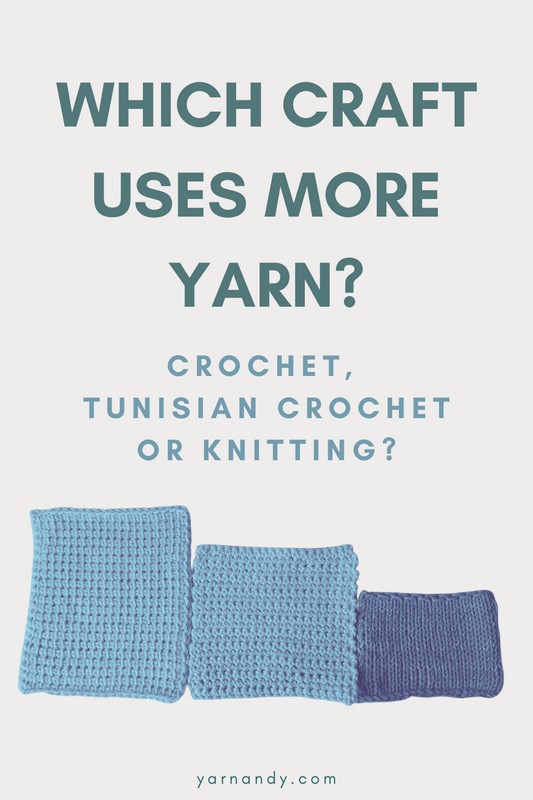

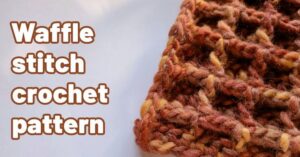
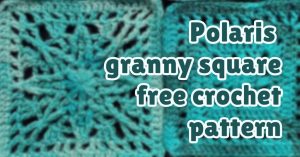
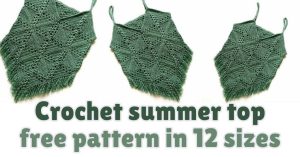


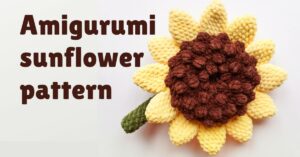
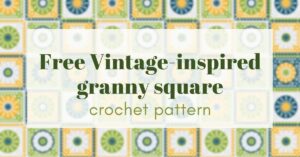


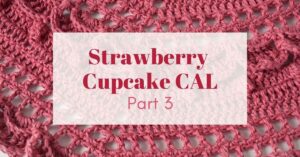
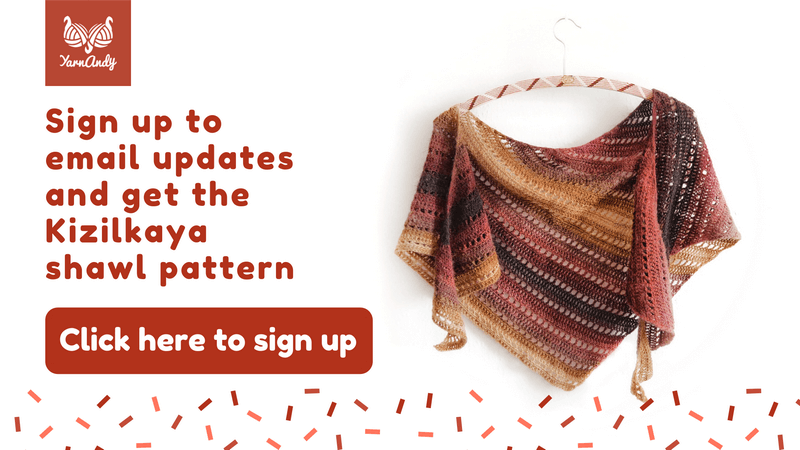
I love this! I am not, by profession a scientist, but I AM a writer by nature and by hobby. I have a very curious mind, with lots of “what if” and “I wonder” questions at all times, which is good for both science AND fictional writing. Lol
I’m a lifetime crocheter, learning to knit and have not tried Tunisian yet. You have managed to answer all of the “I wonder” questions I had floating around in my head at this time. 👏👏
I would be willing to bet that you could get a few experienced multi-needle crafters to volunteer their input for a more detailed study. However, this result is pretty consistent with what I’ve heard about knit vs crochet.
Great job on your meticulous gathering of data and explanation of your process!
You have gained a new subscriber! 😊👍
Thank you, Gina! If you know anyone interested in trying this, I’m always happy to share their results.
I’m planning another experiment with the proper hook size for Tunisian crochet, to see what happens when you make the fabric as you’re supposed to, not with the same hook size.
Women scientists for the win! I’m a scientist too and I’m not going to nit pick your experiment because I think it’s a valid result and you’d need a huge sample size to do much better, and all these techniques are individual because everyone does them their own way! What most fiber arts people need is a rough comparison when shopping for yarn. If I need 3 skeins to knit a project, then I probably need 4 to crochet something similar. You did a great job and I thank you for your efforts!
Thank you, Christine. There are many variations to this experiment. The most important one would be using the proper needle size for knitting and the correct hook size for Tunisian crochet for that yarn.
I chose the middle ground, but I’d like to replicate this experiment one day with this in mind.
Making a gauge swatch with your yarn will always tell you more than a generic experiment like this one, though.
Based on weight, yarn consumption is closer to 20% not 25%. I know that’s being pedantic but since you were so scientific on your measurements it makes sense to be scientific about your results. I already knew knitting seems to be most economical, however great to see time and stitch count were a huge benefits of the crochet and Tunisian methods. Granted individual proficiencies in each will cause time to vary a ton. Thank you interesting article.
Thanks for your comment, Collette. I redid the calculations and I get 24% for regular crochet and 26% for Tunisian crochet, so maybe I should really update the regular crochet percentage.
Which numbers did you use that got you 20%?
I think this experiment was off a little bit. You were basing it off of amount of yarn used based on stitches made, right? Not length of the fabric or weight of yarn consumed. I would be interested in seeing these experiments. Each technique gets 5 grams to see how far it goes into a project (in terms of length while keeping width or number of stitches consistent across all samples). Additionally, using the appropriate sized hook and needle should have been used here. Using a 4 mm tunisian hook when you really needed 5 or 5.5 mm will obviously use up more yarn.
Thank you for your feedback. Please do this experiment yourself and come back with the results.
There are many ways to do such experiments, which is why I invite anyone to try their own version.
For my version I weighed the samples made with the same number of stitches, then calculated the weight of a “standard” gauge square that would potentially be made from that yarn with that specific technique. This way I could compare them.
For the Tunisian sample, I made one with a 5 mm hook, but it was airy/limp and it didn’t feel like the other fabrics, so I repeated the process with 4 mm, to compare only the techniques.
I try to eliminate as many variables as possible when doing experiments.
There is a very large range of hook sizes you can use with Tunisian and I’ll probably make an experiment later on to see how much yarn Tunisian crochet uses per surface with different hook sizes and the same yarn.
Very interesting. I’ve wondered the same question and I’m satisfied with your results as a good base answer. Thanks!
Thanks! I’m looking forward to seeing experiments from other people as well.
This is so interesting, Andrea! I love your attention to detail. I also find your results very useful, because I have accumulated LOTS of cheap acrylic yarn that I’d like to up, so I can buy some nicer yarn. Now, I know it makes the most sense to do a blanket in Tunisian crochet, because I will use more yarn and I will also make faster progress.
Aw, yes, please do use up that yarn and treat yourself with some precious natural fibers 😄
Liquid fabric softener and some “just hotter than warm water” will make cheap acrylic yarn feel like more expensive yarn. I just won’t buy more expensive yarn, but I will buy the heck out of some fabric softener and use of quarter’s worth to soften a garment, or use a whole dollars worth for a queen size blanket. I also don’t rinse much of it out If at all – it just depends on whether I tripped (and spilled more in, i joke) when I was pouring it into the machine or not. I try to stop the machine and turn it immediately to spin, after I use the hot wash cycle to get the hot water (in Texas summer, I just use the warm wash cycle/in winter, the hot cycle – the washer is in the garage). As acrylic is the most heat sensitive synthetic, the manufactured crinkle in the fiber will loosen and you get a yarn that is somewhere between cotton and so fluffy it might distort your stitches.
Thank you for your comment, Ronlynn.
I can’t recommend using fabric softener, as it builds up on the fibers. Some people get irritations from it and it coats the washing machine too.
I’m glad it works for you, but I wouldn’t use it for acrylic (actually, I stay as far away as I can from fabric softener for any fiber). Steam is my go-to and it works perfectly and permanently.